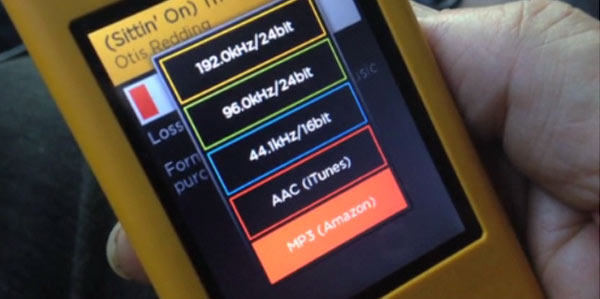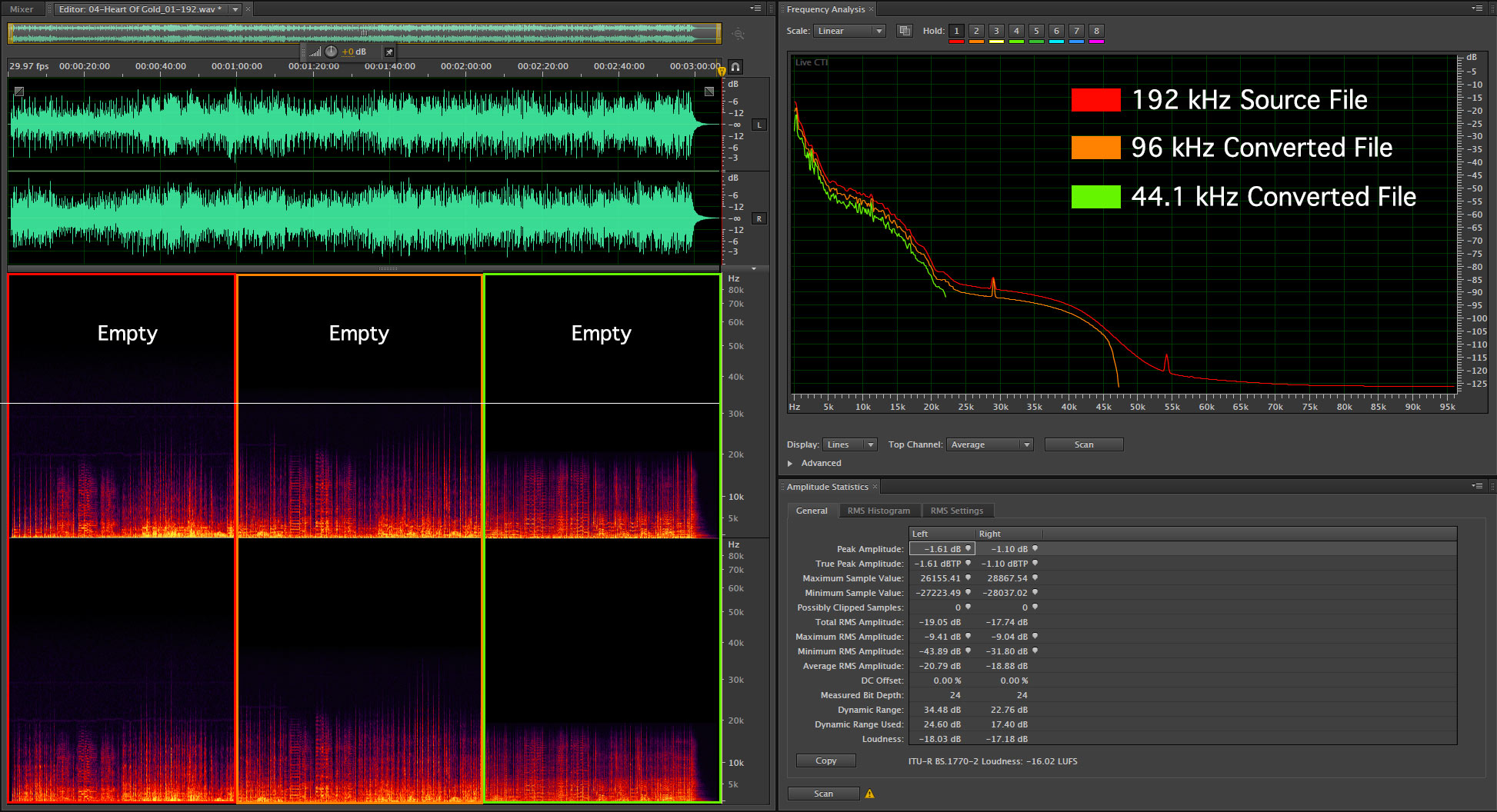Heart of Gold: Pono Revealer Part II
Neil Young and Ponomusic announced a software application recently that lets any Pono owner “process” any “high-resolution” tune in their Pono library into a variety of formats and downconversions. I don’t have a Pono player and even at $259 at Fry’s, I’m not tempted to acquire one. It’s a fine portable player but I already have several portable high-resolution players (Sony, HTC One HKE). If you go to the Pono site and watch the tutorials about Revealer, you’ll be shown how to get the application, how to load up a tune (the one they talk about is Neil’s classic “Heart of Gold” from 1972), and how to switch between the various versions. They believe this will help spread the word about high-resolution audio by demonstrating to your skeptical friends just how “easy” it is to differentiate between a 192 and 96 kHz versions, for example.
They video tutorial didn’t explain exactly what processes were used to prepare the lower fidelity versions. As an audio professional and former mastering engineer, I know something about sample rate and format conversions. The first process reduces the sample rate. It might seem like a simple process but it’s not. Sure, all of the your audio programs can do it but are they doing it the best way possible? There are a variety of parameters associated with Sample Rate Conversion. For example, a professional tool like Process from Sonic Studio provides three different filter choices: steep, gentle, and gentlest. The type of filtering applied during a SRC will produce different results. They aren’t wildly different but they matter. And then there’s the type of dither that you want to apply to the converted file. What’s the best? Process includes using no dither, triangular dither, rectangular dither, and noise shaping. Learning what each of these does to the fidelity of the output file takes a lot of time and careful listening. There’s one additional choice in Process. You can choose “classic” conversion or the “Sonic HD” versions. Knowing how all this works is what makes a mastering engineer worth his or her salt.
Take a look at the spectra of the 192, 96, and 44.1 kHz converted files. I’ve made no attempt to level match them.
Figure 1 – Neil Young’s “Heart of Gold” at 192, 96, and 44.1 kHz sample rates. [Click to enlarge]
Notice the 3 dB difference between each subsequent conversion. It is also apparent that the original source has no information (music or hiss) above about 30 kHz. A 96 kHz sample rate version would be able to encode the tune without the extra octave and match the fidelity of the 192 kHz version.
The permutations that are possible with all of the SRC choices can be daunting…even to experts. In a previous post, I converted Laurence Juber’s award winning “Mosaic” track using all of the types in various combinations and uploaded them to the FTP. If you curious how they sound, you can download them and take a listen. The differences are quite subtle but they are there.
We don’t know anything about how the “Revealer” handles the amplitude of the converted files either. When I did the conversions using my own system and looked at the results, each subsequent sample rate conversion lowered the amplitude by 3 dB. A professional tool will automatically do this to prevent “inter sample overs”. The overages can be caused by the sample rate conversion algorithms. It’s critical that any comparison take into account level differences. I have my doubts whether the Pono Revealer is rigorous about maintaining each format at exactly the same level. It would be way too easy to overlook this step and leave the original 192 kHz source louder than the others. And remember…louder is always better, right? Maybe this is what the rock stars heard in the Caddy. I really don’t know but it’s not crazy notion.
I don’t believe the Pono Revealer is a reliable tool to make comparisons about the fidelity of an older standard resolution analog tape conversion. It will take a lot more information and some serious investigating to determine its usefulness.
I’ll be uploading short examples of “Heart of Gold” at all three rates for you to compare. If I get the time, I might even edit them together into a single file and let you guys see if you can pick them out as Neil claims he can. Stay tuned.



Mark, The technical issues you discuss here are miles beyond my ability to understand but one thing I do know for sure is that if the Revealer sampler converter tool really makes it,
“easy” it is to differentiate between a 192 and 96 kHz versions, for example.”
Something STINKS with the file conversion. !!!!!!!!!!!!!!!!!!!!!
Yes, so many sample rate comparisons available for download don’t get the levels matched. There are all the other complications related to SRC you described. A most basic thing you must do in any comparison for quality is get levels matched. If you don’t do that you have nothing worth knowing about in regard to comparisons.
It is amazing how this guy keeps on preaching his beliefs.
And it must be hard to discuss with someone, that claims that 1 plus 1 are 3 – because he ‘feels’ that they are 3.
Greetings
FB
Hi Mark,
A couple comments on Pono.
First off, I own one and I have to say I’m pretty impressed with the sound quality. It’s clearly better sounding than the Astell & Kern AK120 and it makes the Sony NWZ-N17 sound like a cheap MP3 player (I own both). In fact, the Pono’s sound quality (in balanced mode) is closer to my Benchmark DAC2 HGC than either of the two portables. I think the only thing holding it back from equaling the Benchmark is its small battery power supply. It’s that good.
Second, the downsampling function of the Pono Revealer uses JRiver’s format converter engine. The PonoMusic World software that pairs with the Pono player is a customized version of JRiver. Jriver’s converter engine works well from my experience, though I haven’t compared it to some of the professional apps that you mentioned.
Russ
Thanks Russ…I’m in general agreement that the Pono player as a portable device does a very good job. I would seriously doubt that it can come close to a Benchmark DAC2 HGC…but whatever. The down conversion algorithms in the JRiver engine are most likely quite good but are not used by professionals. And the fact that on 12,000 albums on the Ponomusic website are transfers from analog tape to hi-res bit buckets makes the point about the revealer pretty silly.
Thanks Mark. I’ll drop by to say hi at the Show Newport.